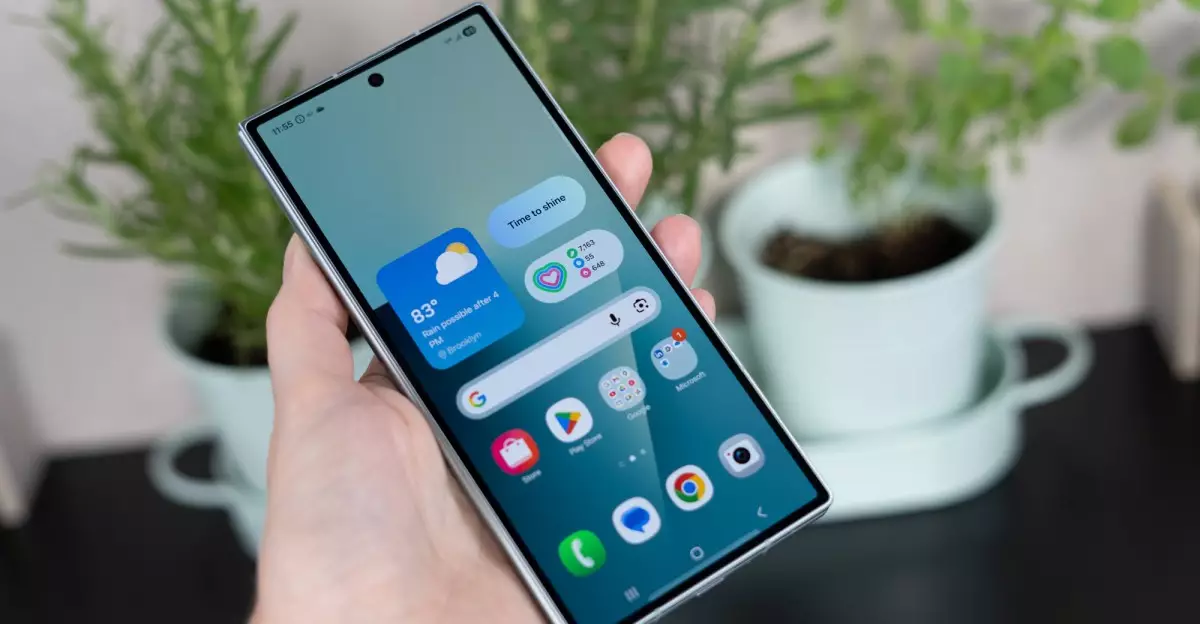The Samsung Galaxy Z Fold 7 sets a new benchmark in the world of foldable smartphones, not merely through its features but by redefining what a premium device can be in terms of form factor. At just 8.9mm when folded, it is the slimmest foldable Samsung has ever produced, creating a near-seamless, pocket-friendly device that feels inherently “next-gen.” This sleekness signifies more than just aesthetic appeal; it demonstrates Samsung’s commitment to perfecting portability without compromising screen real estate. The larger outer display, expanding from 6.3 to 6.5 inches, enhances usability when folded—bridging the gap between a compact phone and a tablet. Such enhancements make the Z Fold 7 feel more like a real-world gadget rather than an experimental concept, affirming Samsung’s maturity in foldable design. However, despite its technological advancements, the device maintains a hefty price tag of nearly $2,000. This hefty cost raises questions about accessibility, but also underscores Samsung’s belief that this device is a luxury that warrants a premium.
Performance Versus Innovation: A Critical Perspective
While the Galaxy Z Fold 7 introduces impressive refinements—especially in its architecture and slim profile—its core performance remains quite similar to its predecessor, the Z Fold 6. This may seem underwhelming to some, especially considering the steep investment. It’s an acknowledgment that Samsung’s focus with this iteration was more on improving the physical design and user experience rather than turbo-charging its innards. Such a strategy reveals a philosophical point: Samsung views foldables as a segment where innovation is more about finesse and usability than raw power. Still, this leaves some tech enthusiasts longing for a dramatic leap forward in processing speed, camera quality, or battery efficiency. The real strength of the Z Fold 7 isn’t just in its specifications but in its potential to radically alter how we interact with mobile devices—making them more versatile, more integrated into daily life. Yet, the question persists: how many consumers will see this as a justifiable leap in value, given the high price?
Strategic Preorder Incentives: A Smart Buyer’s Play
Preordering the Galaxy Z Fold 7 offers a rich tapestry of incentives but requires careful planning, as many perks expire at launch. Carriers and retailers alike are eager to entice purchases with lucrative trade-in deals—some offering up to $1,100 in credit—and complementary accessories. This strategy underscores Samsung’s awareness that buyers often hesitate at the high price point, and thus leverage trade-ins to soften the blow. For example, trade-ins of previous Galaxy devices can slash the effective price by half, making the flagship more approachable. Carriers like AT&T, Verizon, and T-Mobile also sweeten the deal through monthly installment credits, with some offering the full amount over 36 months. This phased payment approach shifts the cost burden but may lead to long-term commitments, which might not appeal to all users. Additionally, Samsung’s online store throws in a $50 credit when bought outright, with the possibility of a further $300 bonus if accessories are added. Such schemes are crucial in a saturated market that demands exceptional value for premium devices.
Market Implications and Consumer Expectations
Samsung’s aggressive promotional tactics, combined with the device’s innovative design, outline a strategic vision that focuses on creating a segment of early adopters willing to pay a premium for the latest foldable technology. This is not merely about having the newest device but about shaping consumer perceptions—making foldables seem more practical and desirable. Yet, the high price tag, coupled with only incremental performance upgrades, might alienate the mainstream, pushing foldables into a niche for tech enthusiasts and early adopters. Furthermore, the availability of different storage variants at varied price points—sometimes with retailer-specific deals—introduces fragmentation, which could confuse consumers who seek straightforward value propositions. The push to bundle accessories and offer trade-in bonuses also indicates Samsung’s recognition that consumers are seeking ways to make this luxury device more budget-friendly. Ultimately, the Z Fold 7 exemplifies a transition phase in smartphone technology—pushing innovation forward while grappling with affordability and market maturity.
Final Reflection: Innovation’s Cost and Promise
The Galaxy Z Fold 7 embodies the bold, ambitious spirit that defines Samsung’s foldable journey—blurring the lines between a sleek phone and a portable mini-tablet. Its thinness and larger screen make it more ergonomically appealing, and targeted trade-in deals lower the entry barrier. Yet, the high price tag remains a significant obstacle, suggesting that foldables are still predominantly a luxury for early adopters rather than the mass market. For those willing to navigate the promotional hoops and hefty tariffs, the Z Fold 7 promises an unparalleled experience—one that could redefine mobile computing if its promises translate into everyday practicality. Nevertheless, skepticism remains: will this device truly justify its cost through transformative use cases, or will it remain an aspirational gadget for enthusiasts? Only time will tell, but unquestionably, the Z Fold 7 marks a bold step forward in the evolution of smartphones—whether as a glimpse into the future or a high-priced experiment.

